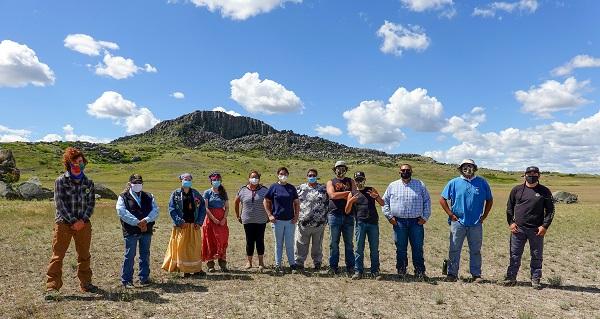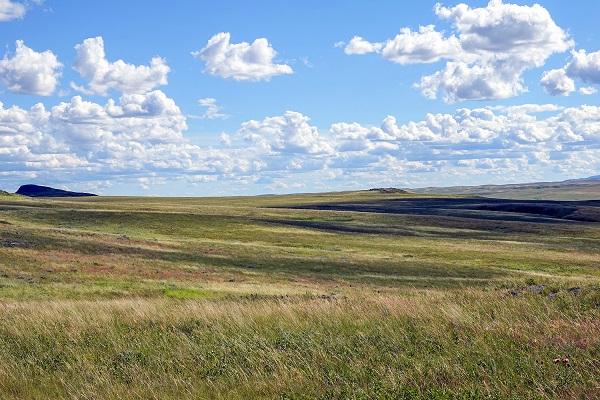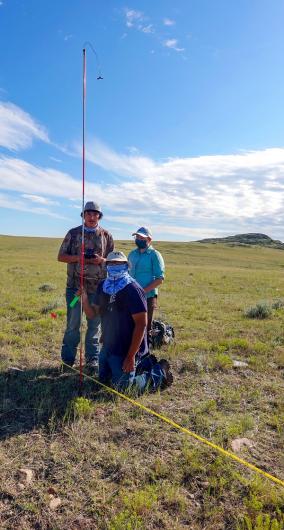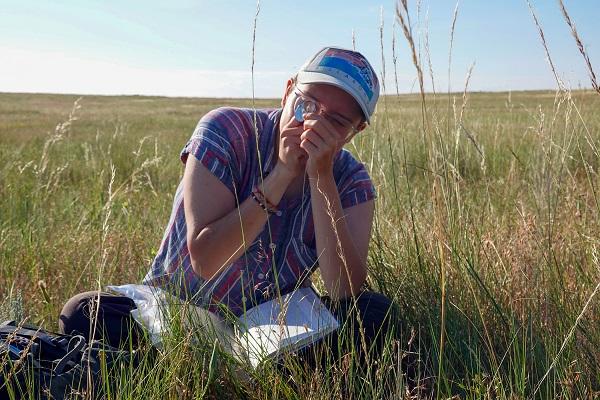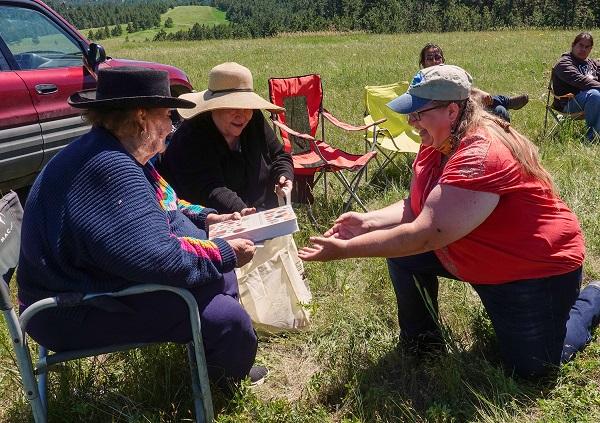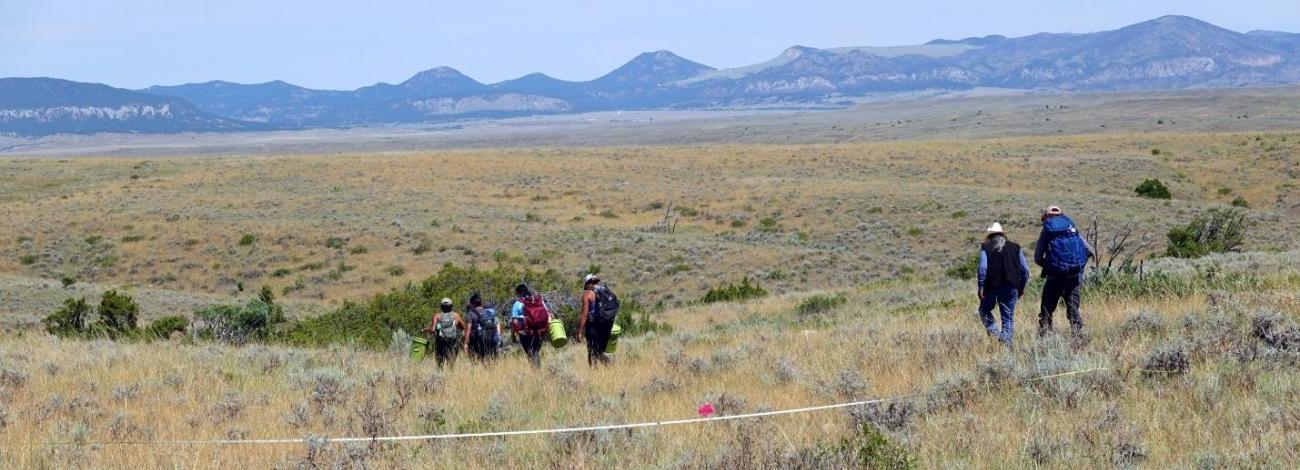
Fort Belknap Partnership for Restoration
Story by Wendy Velman, Montana/Dakotas Botanist and courtesy of Dr. Cristina Eisenberg, Program Director. Photos by Dr. Cristina Eisenberg.
In fall 2019, BLM Montana/Dakotas entered a five-year partnership with the Fort Belknap Indian Community (FBIC) in North-central Montana and the Society for Ecological Restoration (SER) to implement the Native Seed and Grassland Restoration Program. The program focuses on the role of Traditional Ecological Knowledge (TEK) in ecological restoration. TEK involves Historic Cultural Knowledge and the importance of the native plant species to the tribes. Program participants work in close partnership with FBIC on BLM-managed land and adjacent tribal land.
Wendy Velman, BLM Montana/Dakotas State Office Botanist, is providing oversight for the program, with guidance from Marcia Pablo, BLM Tribal Liaison. The program is being led by Program Director and Principal Investigator Dr. Cristina Eisenberg from Oregon State University, who is an Indigenous woman; and SER Executive Director Bethanie Walder.
"While the words ecological restoration suggest degraded land, we found through this project that is not the case on the BLM-managed lands we worked. You can see that the users of this working landscape are dedicated to managing a healthy prairie,” said Velman.
The first season took place from June-August 2020 and was focused on the BLM lands in the Malta Field Office. The team is happy to report that they have completed a successful first field season, despite logistical challenges as well as challenges created by the pandemic. Special thanks goes to Tom Darrington, BLM Malta Field Office Manager, and his staff that helped line out the areas the team could focus on for the first field season of work.
Summer botany field technicians and SER employees Monroe Fox (a member of the Kainai First Nation), Kaden Ashdown, and Payton Feller worked closely with Dr. Eisenberg. As a 13-year-old, Fox began doing botany work as a Community Conservation Fellow on Dr. Eisenberg’s grassland restoration project in Alberta, Canada. She has worked as a technician for Dr. Eisenberg for three years and now plans to go to college and get a PhD in botany. Fox is an example of the strong benefits to Indigenous youth of Community Conservation Fellows programs. She joined the program as a Native young woman to be a role model for and mentor the FBIC Fellows.
On the Montana Northern Great Plains, in partnership with FBIC, the program trained eight Community Conservation Fellows in Traditional Ecological Knowledge; native plant identification; Assessment, Inventorying, and Monitoring (AIM) protocols; seed collection in compliance with the BLM Seeds of Success program (SOS); and ecological restoration based on Society for Ecological Restoration Standards. Many elders supported the project, led ceremonies, and shared their Traditional Ecological Knowledge.
The Community Conservation Fellows did an outstanding job and learned the methods and protocols quickly. They became highly adept at using the sophisticated data-management system created by BLM, which involves data entry on tablets using USDA Natural Resource Conservation Service plant codes.
In the AIM plots on BLM land used for cattle grazing, the team identified several highly productive native grass populations. The Fellows helped make several robust collections of seeds for plant restoration which were shipped to the Bend, Oregon Seed Extractory.
The program is also partnering with the Tribal Historic Preservation Office to collect and protect historical knowledge from within their community of elders. Fort Belknap Program Coordinator Daniel Werk is interviewing elders to better understand the role of important native plants from a cultural perspective and for use in restoration.
Besides assessing and restoring public lands, this long-term program’s objective is to support and restore wellbeing to a Native American community by providing education and job opportunities and by obtaining program resources such as housing and food directly from the FBIC. As an example, Dr. Eisenberg has selected five of the Community Conservation Fellows to work as field technicians on this program in 2021. Dr. Eisenberg will work with BLM and SER to obtain fellowships during the academic year to further support their development as restoration ecologists within a Traditional Ecological Knowledge framework.
The BLM looks forward to planning for another successful field season next year, in keeping with COVID-19 safety protocols.

